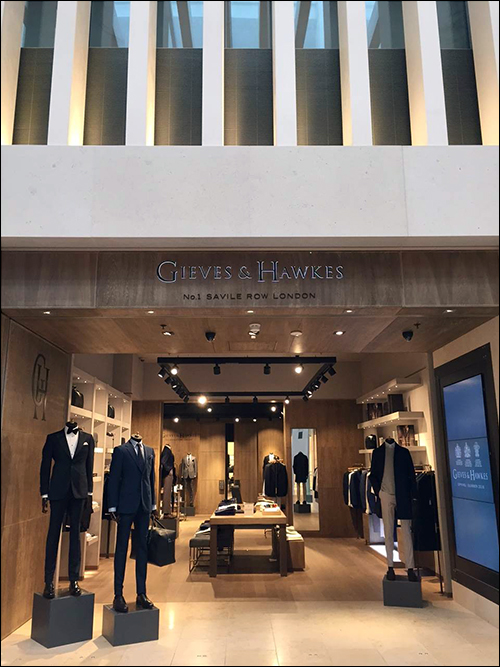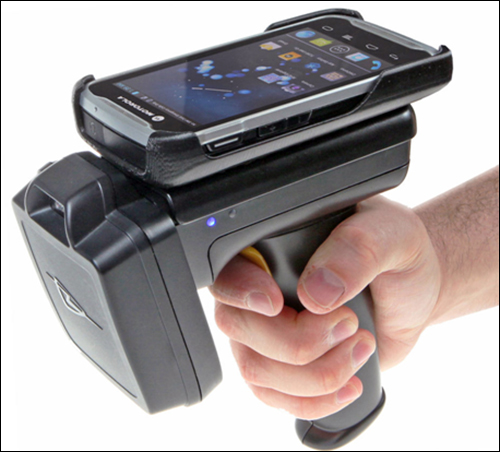To improve inventory visibility and prevent loss, men’s clothing retailer Gieves & Hawkes has deployed a radio frequency identification system at its store in Birmingham, England. The solution tracks goods as they are received and stored in the back room or store front, then prevents unpurchased merchandise from being taken out the front door by sounding an alert, as well as storing data regarding which item is being removed. The company is expanding its RFID deployment to its newest store, located in of Hackney, an East London borough. The technology is provided by RFID solutions company Catalyst. Both Gieves & Hawkes and Catalyst are owned by Li & Fung.
Gieves & Hawkes is a high-end men’s custom and ready-to-wear clothing retailer based in London, with more than 200 stores in China alone, as well as eight stores in the United Kingdom. The company was founded in 1771, making it one of the world’s oldest tailors. Britain’s royal family and royal military have worn its custom suits and clothing for several centuries. (Gieves & Hawkes did not respond to requests for comment.)

The Birmingham store, which opened in the Mailbox mall five months ago, features an entranceway that measures about 4 meters (13.1 feet) in width and opens directly into the mall’s interior. That makes the high-value items within the store at risk of theft, so providing security for those products is important. At the same time, the store didn’t want to install visible antennas or electronic article surveillance (EAS) devices that could interfere with the store’s aesthetic.
The retailer faces another challenge that made RFID a desirable technology: ensuring that its merchandise is always in stock. Gieves & Hawkes sells ready-made products that it strives to have on hand at all times. The store, however, is not large enough to maintain high volumes of each size of every item. As such, ensuring that goods are replenished as they are sold is imperative.
The company began working with Catalyst in 2015, and opted to install the technology for the new store’s debut. The goal, says Lee Adams, Catalyst’s marketing director, “was very discreet security and inventory management.” RFID-based EAS technology, he explains, can not only trigger an audible alert if an unpurchased item is being removed from the store, but also indicate what that item is. “It’s not just a dumb bleep,” he says. “There is some intelligence behind it.” This intelligence includes not only replenishment information, but also analytics. Since store management has a record of what is being removed, it can take action to better prevent the removal of those items.
The company is applying an ultrahigh-frequency (UHF) Gen 2 passive RFID tag to every inventory item—including cuff links, socks, jackets, shirts and trousers—as it is received at the store. Gieves & Hawkes prints and encodes the Smartrac Web Ucode 7 RFID tags on a Zebra Technologies ZT410 printer. Each tag’s unique ID number is then linked to the description and stock-keeping unit (SKU) of the item to which it is attached.
Data is store on Catalyst’s cloud-based software platform. Store personnel use a Keonn Technologies AdvanScan handheld RFID reader to conduct weekly inventory counts in the back room and on the sales floor. The reader captures the tag ID numbers and forwards them to the cloud-based server via a Wi-Fi connection. Catalyst software compares the read results against the stock list and transmits a replenishment report to store management, indicating which items need to be moved from the back room to the sales floor, and which goods need to be reordered.
A desktop Keonn AdvanPay-110 RFID reader is installed at the point of sale. When a customer purchases an item, a sales clerk reads that product’s tag ID, and the tag is deactivated so that it can no longer be interrogated by a reader at the doorway.
There are three Keonn EAS AdvanSafe readers installed at the doorway: one master reader and two slave readers that forward data to the master unit. All are installed above the wooden ceiling, which is 3.2 meters (10.5 feet) in height. Because they are above the ceiling, the doorway is entirely free of EAS devices. According to Adams, the readers’ antennas have been configured in such a way that the beam range is specific only to items moving through the door, rather than those standing near it. Once the reader captures a tag ID, it sounds an audible alert and issues an alert to store management indicating what is being removed.
Because the Birmingham store opened with the RFID system already in place, Adams says, it lacks a benchmark to measure how the technology may improve inventory management or prevent loss. However, he adds, inventory accuracy with the technology is at 98.5 percent. Based on the results of the Birmingham installation, Gieves & Hawkes plans to install the technology at its Hackney store, which will open its doors in June 2016.
Other stores may follow, Adams says, though Gieves & Hawkes, like Catalyst’s other retailer customers, is taking a measured approach, installing the system at a limited number of locations to determine the benefits, and to learn how well employees adjust to the new technology. Because Gieves & Hawkes makes its own products, Adams adds, it may eventually begin tagging goods at the point of manufacture, though that would happen after more stores have started using the technology.


